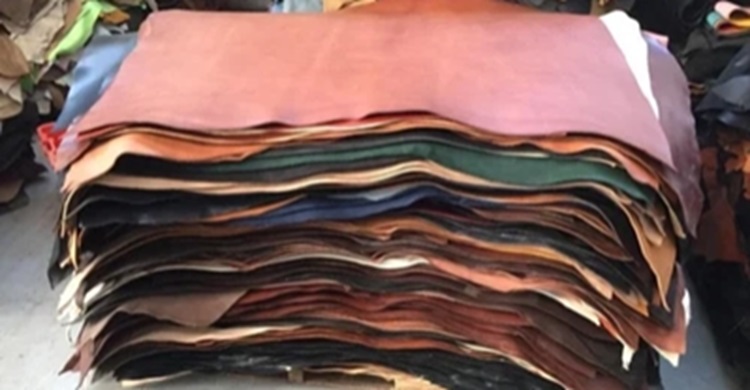Bangladesh’s leather sector stuck at $1bn; $5bn could be tapped: Experts


Bangladesh's leather industry has been struggling to surpass the US $1.0 billion export mark for over a decade, hindered by compliance gaps and insufficient new investment, said sector leaders and economists.
Industry stakeholders describe the sector as ‘trapped in a billion-dollar cage’, with multiple challenges preventing it from reaching its estimated $5 billion potential by 2030.
Experts highlight inadequate infrastructure, lack of international compliance, and poor coordination among key stakeholders as primary obstacles.
The Savar Tannery Estate, a crucial hub for the industry, remains incomplete, while its Central Effluent Treatment Plant (CETP) is poorly maintained and continues to release untreated water.
This environmental non-compliance is a major barrier, as local tanneries cannot obtain the essential Leather Working Group (LWG) certification, said Md Shaheen Ahamed, Chairman of Bangladesh Tanners Association (BTA).
All governments have identified the leather industry as a priority sector due to its growth potential, investment opportunities, and capacity for employment generation. Leather and footwear remain the largest exporting manufacturing sectors after textile and apparel in Bangladesh.
“As the representative of the Bangladeshi leather sector, we hold a sincere responsibility to the country in upholding international quality, social, and environmental standards in our industry. This will help establish Bangladesh as the number one sourcing destination for all kinds of finished leather,” Shaheen Ahamed said.
As a traditional and long-established sector, the global leather industry has often been associated with pollution. Many unorganised tanneries contribute to river degradation through untreated effluent, creating public health hazards due to solid waste dumping, inefficient water use and harmful chemicals, he explained.
“In response to these environmental concerns, our organisation is championing a precautionary approach to help member firms mitigate risks proactively. By focusing on prevention before harm occurs, we aim to guide the industry toward a sustainable future,” he added.
Dr M Masrur Reaz, Chairman of Policy Exchange Bangladesh, told UNB that the absence of LWG certification remains a critical roadblock. It restricts access to premium global markets and forces Bangladesh to sell raw hides at 20–30 percent lower prices. In comparison, India has over 150 LWG-certified tanneries and Pakistan over 80, while Bangladesh has none.
Bangladesh is one of the largest producers of raw hides in South Asia, with the industry hovering near the $1 billion export mark for over a decade, Dr Masrur said.
“Bangladesh has every advantage, including one of the world’s largest supplies of raw hides, a huge labour force, and government support for export incentives. Yet, the sector remains stuck as infrastructure, compliance, coordination, and investment lags far behind global standards,” he noted.
Foreign buyers are avoiding Bangladeshi leather due to non-compliance with international standards and a lack of proper certification, Dr Masrur said.
As a result, he said, the country continues to export large volumes of wet blue --semi-processed leather -- which fetches far lower prices compared with finished leather goods.
Many tanners also struggle to pay fair prices upfront, he added, as banks often demand Leather Working Group (LWG) certification or clean environmental records before approving loans. This has left local producers at a disadvantage in tapping into higher-value international markets.
Other issues include a fragmented ecosystem, no central rawhide grading or auction system, cash flow problems among tanners, middlemen who add no value, limited vertical integration, and few tanners producing their own footwear or bags.
Brands often outsource from inconsistent, uncertified sources. Slow technology adoption, outdated machinery and finishing methods, environmental non-compliance, and inefficient pricing systems further impede growth.
The sector also faces substantial raw hide wastage, estimated at 15–20% during events like Eid-ul-Adha, due to poor preservation and transport. This problem is exacerbated by outdated technology, lack of vertical integration, and weak pricing systems.
Abul Kalam Azad, President of the Tannery Workers' Union (TWU), said Bangladesh’s tannery industry is a 70-year-old traditional sector. However, many workers do not receive basic labour rights, such as employment letters, identity cards, or minimum wages, despite industrial relations being generally stable.
“Owners remain strict when it comes to granting workers their rights. This includes compliance required for global market access of leather goods,” he said.
Non-implementation of social compliance and an ineffective modern CETP system prevent tanneries from obtaining LWG certification, making it difficult to retain foreign buyers. Consequently, the formal tannery sector increasingly moves toward informality, Azad added.
Experts propose several measures to unlock the sector’s potential. These include fast-tracking the completion and upgrade of Savar Tannery Estate and its CETP, promoting LWG certification as a national priority through tax rebates or soft loans, and establishing price monitoring mechanisms during peak seasons.
Diversifying exports toward finished leather goods instead of raw hides, supporting SMEs with design and branding assistance, and implementing structural reforms are seen as crucial steps to advance the industry.
